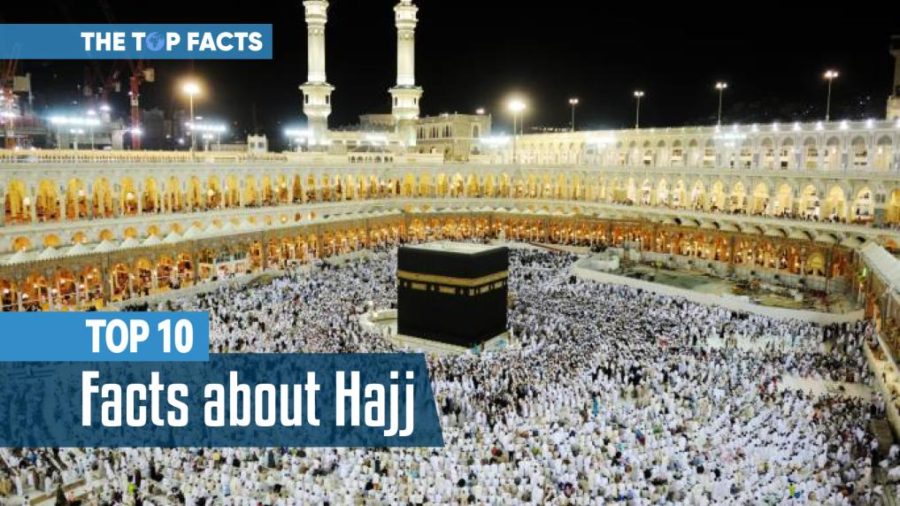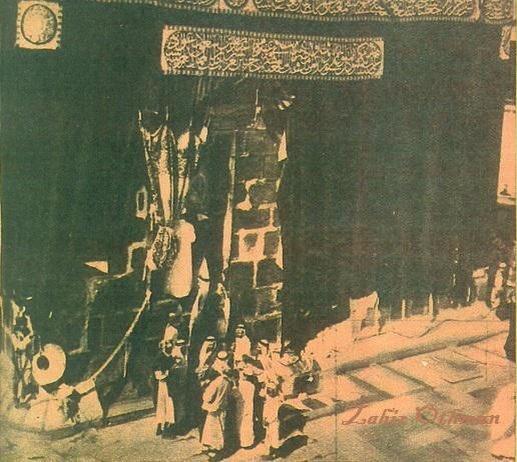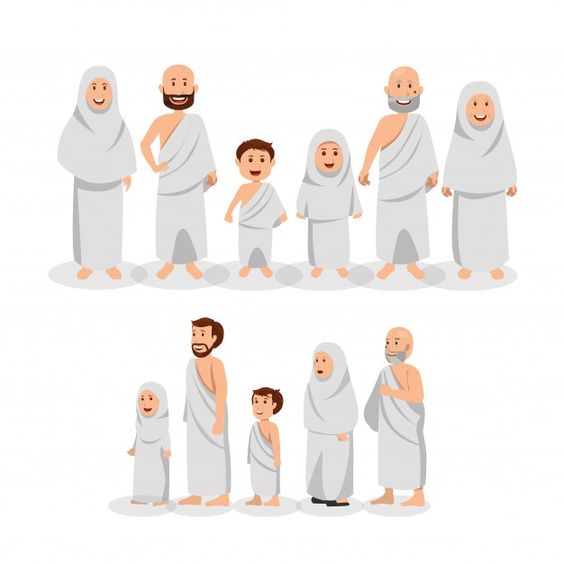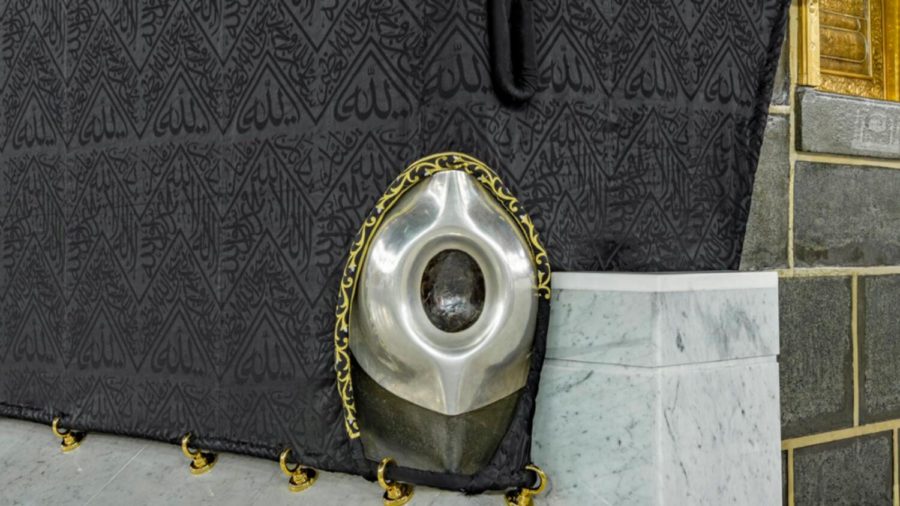
10 facts about hajj
At least once in their lives, every Muslim desires to embark on the amazing spiritual pilgrimage known as Hajj. Though there are many intricacies, laws, and regulations to follow when conducting Hajj, the most crucial factor has pure intention. Not only is Hajj one of the most significant religious responsibilities, but it also enhances and purifies a Muslim’s trust in Allah. So, let’s get started with our list of 10 facts about Hajj.
Table of Contents
Every year, around 2.5 million people perform Hajj.
According to Saudi official statistics for 2019, 2.5 million people performed Hajj!
With over three times as many foreign pilgrims (1.9 million) as Saudi locals (Saudi and non-Saudi) (634K), you might be surprised to learn that the most common non-Saudi nationality was Egyptian!
Pilgrims arrive from all over the world, with the majority coming from Asian countries (59 percent). With 35,355 travelers in 2019, Egyptians make up the largest gatherings of non-Saudi pilgrims, accounting for nearly 36% of all non-Saudi pilgrims.
It’s more than 1,500 years old.

The origins of Hajj may be traced back far deeper. In reality, the Hajj rites date back to 2,000 BCE! When we consider the ceremonies included in Hajj, such as rushing between Safa and Marwa to reenact Hajar’s hunt for water, it becomes clear that it is far older. The Ka’ba itself predates 631CE by many centuries. First and foremost, Prophet Ibrahim erected a monument on the location of the Ka’ba, which worshipers of many faiths visited. Ibrahim intended to sacrifice his son on Mount Arafah.
The Hajj is Islam’s fifth pillar.
Hajj is the fifth pillar of Islam and is an Islamic obligation. Allah (SWT) urges Muslims to visit Makkah and finish it in the Holy Qur’an – in fact, the Qur’an has a Surah (chapter) dedicated to it! Allah says in this chapter: “That they may witness benefits for themselves and mention the name of Allah on known days over what He has provided for them of [sacrificial] animals… Then let them… fulfill their vows and perform Tawaf around the ancient House. That [has been commanded], and whoever honors the sacred ordinances of Allah – it is best for him in the sight of his Lord…” (22:26-30)
Going to Makkah is a rare privilege.
According to a recent Pew Research Center study of Muslims worldwide, a median of 9% indicates they have performed the pilgrimage to Mecca in the 39 nations and territories examined. Those who live near Mecca are more likely to have participated in the hajj. For example, 20% of Egyptian Muslims claim to have done so, but only 3% of Indonesian Muslims claim to have done so.
Hajj and Eid ul Adha is on the same day.
The hajj falls on the same day as Eid al-Adha, a significant Muslim festival that begins on the 10th of Dhul Hijjah and is observed by all Muslims, including those not undertaking the pilgrimage. On Eid al-Adha, Muslims with the financial means usually slaughter a big animal, such as a cow, goat, or sheep, and distribute portions of the meat to the destitute worldwide. The ritual sacrifice recalls Abraham’s willingness to sacrifice his son for God in the Quran.
No gender segregation
Unlike many other Muslim ceremonies, the Hajj does not require men and women to be separated in the Grand Mosque of Mecca. They stroll around the Kaaba in a group, ascend Mount Arafat together, and throw stones at the Jamarat simultaneously. This represents the equality of men and women in the eyes of Allah. Gender segregation is once again recognized when the Hajj is over.
The number 7 in hajj
The number seven is used in several of the hajj’s main ceremonies. One of these, known as tawaf, entails circumnavigating the Kaaba (Islam’s holiest shrine) seven times. Pilgrims usually go back and forth seven times between the hills of Safa and Marwa.
Read also: 10 Fastest Growing Religions
The ihram: Hajj Dress Code

Both men and women must wear ihram garments to perform Hajj. These remove any signs of wealth or status from Muslims, allowing them to show themselves as equals in Allah’s eyes. Men must wear two white clothes without stitches, one to cover the body from the waist down and the other to wrap across their shoulders. Women can wear simple gowns and headscarves. Men shave their heads and trim their beards and nails, while ladies remove a single strand of hair before dressing. Maintaining cleanliness throughout Hajj is critical; if Ihram’s clothing becomes unclean, the Hajj becomes invalid.
The kissing of the Kaaba stone

A black stone wrapped in a silver ring sits on the eastern corner of the Kaaba. This stone is treasured as an Islamic relic that dates back to the period of Adam and Eve, according to legend. Muslims believe that Allah gave this stone to Adam and that he placed it on an altar for devotion. The stone was later given to Ibrahim by the archangel Gabriel, who used it on an altar — the same alter where Allah tested his loyalty by asking him to sacrifice his son. Many pilgrims try to stop and kiss the stone if they can during Hajj, exactly like the Prophet Muhammad did. Whenever pilgrims are unable to approach the stone, they point in its direction.
Over 351,000 people manage Hajj.
With so many people flocking to Makkah to undertake Hajj, many workers and services are required to accommodate them. In 2019, around 350,000 employees and volunteers were responsible for Hajj-related services. This includes the following:
- Communication services
- health care
- Services for Transportation
- Supervision
Cristina Bugatty is Editor at The Top Facts. She has been a factual writer for the last eight years. She Enjoys writing about anything techy, nerdy, or factually interesting.

